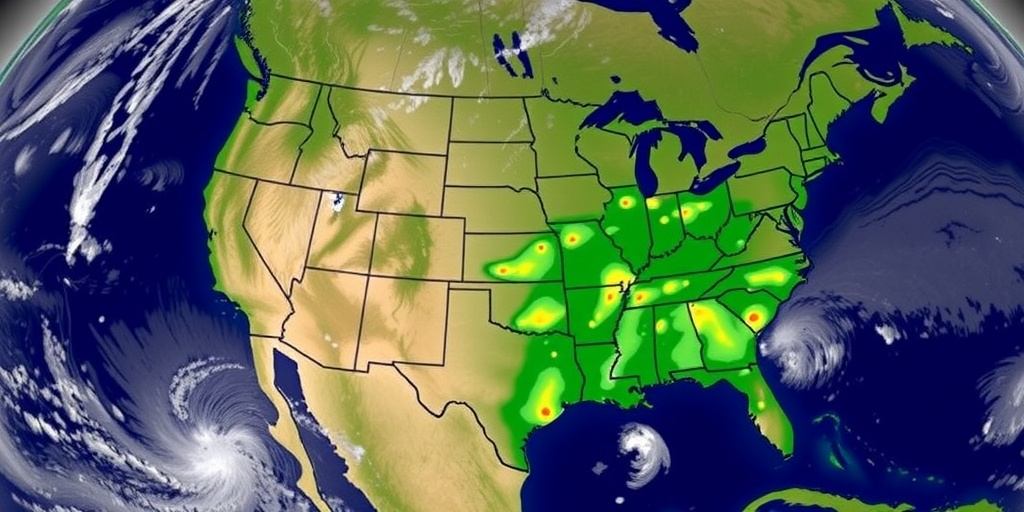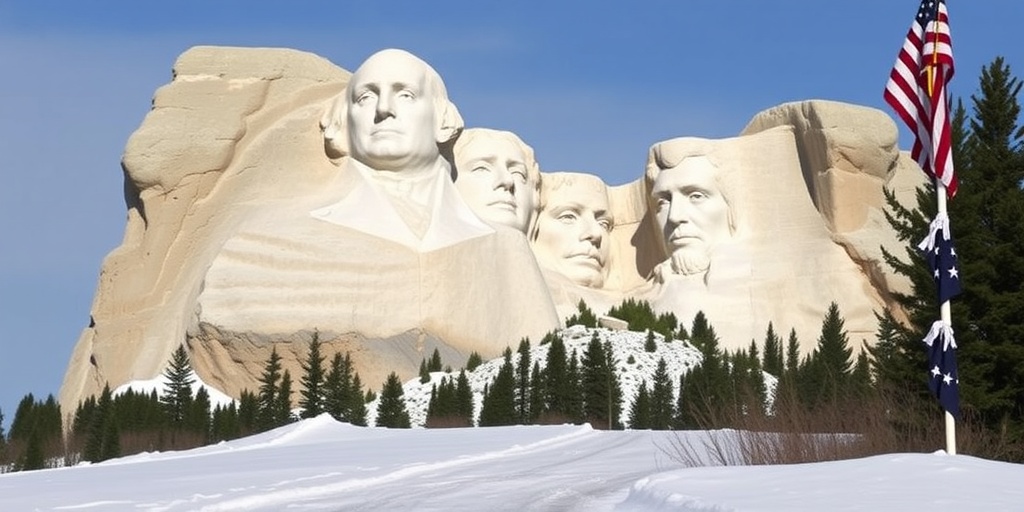Now Reading: National Weather Service Cuts Leave Forecasters in Crisis
-
01
National Weather Service Cuts Leave Forecasters in Crisis
National Weather Service Cuts Leave Forecasters in Crisis

Weather Service Staff Cuts Raise Concerns Over Public Safety and Forecasting Accuracy
In a significant development for meteorology in the United States, the National Weather Service (NWS) announced on Thursday that it has "indefinitely suspended" the launching of weather balloons from its station in Kotzebue, Alaska, due to chronic staffing shortages. This decision reflects a broader pattern within the agency, which has struggled to maintain adequate personnel in the face of ongoing federal workforce reductions.
Weather balloons have been a critical tool for meteorologists, launched bi-daily to collect essential data on wind speed, humidity, and temperature. This data forms the backbone of weather forecasts and models throughout the country and is launched regularly from dozens of weather stations across the U.S. However, the recent cuts signal troubling changes for a service that is responsible for monitoring severe weather and providing timely warnings to communities.
The NWS and its parent agency, the National Oceanic and Atmospheric Administration (NOAA), are facing cuts that are expected to result in over 800 job losses, many of which are tied to the Trump administration’s broader efforts to reshape the federal workforce. Criticism has mounted regarding these layoffs, particularly the termination of probationary employees who are generally easier to dismiss. This trend has left many professionals within the Weather Service shocked and disheartened, particularly those who have dedicated their careers to ensuring public safety through reliable weather forecasting.
One affected employee, Dr. Kayla Besong, who works at the Pacific Tsunami Warning Center in Hawaii, expressed her unexpected disappointment after receiving a termination notice despite being classified as an "essential" employee, typically reserved from layoffs during government shutdowns. Dr. Besong and other employees noted the abrupt nature of the cuts, emphasizing how they lacked prior warning, leaving many scrambling to understand the implications for their careers and the integrity of the weather monitoring system.
With 122 offices across the nation providing regional forecasts and warnings for severe storms, the exact scale of these layoffs remains unclear, with approximately 4,000 employees within the NWS. Anecdotal reports indicate significant emotional distress among staff members, particularly following the loss of three probationary staff members at a California office.
Critics of the cuts argue that these layoffs compromise the ability of the Weather Service to address critical local staffing shortages and raise concerns about the long-term safety of the public. Louis Uccellini, who previously served as the director of the Weather Service, described the actions as “cruel,” emphasizing that many of the employees laid off were recently hired to address pressing needs within the agency. Meanwhile, experts in climatology and meteorology warn that the loss of professional expertise will hinder the agency’s ability to provide comprehensive forecasts and reliable data gathering—both essential in times of extreme weather.
Dr. Justin Mankin, a climate scientist from Dartmouth College, characterized the layoffs as "an astounding move," stressing that the affected workforce possessed specialized expertise critical for navigating challenges brought by climate change. This sentiment was echoed by Neil Lareau, a professor who has witnessed his students transition to the Weather Service, noting that many are attracted to public service despite the possibility of higher wages in the private sector. Dr. Lareau highlighted the importance of younger forecasters, suggesting that their skills with modern technology could be vital for the agency’s future relevance.
Beyond the implications for employees, former Weather Service meteorologist John Toohey-Morales warned of the public safety risks posed by these firings, especially in hurricane-prone areas where reliable forecasting is crucial. He stressed the importance of the Weather Service as a comprehensive resource that supports broadcast meteorologists and aids in disaster preparedness.
The consequences of these staffing shortages extend beyond immediate forecasting capabilities. Experts studying severe weather events fear that reduced staff will impact predictive accuracy, crucial for natural disasters such as wildfires and severe storms. In a recent training session focused on wildfire hazards, Dr. Lareau emphasized the need for specialized forecasting to mitigate the impacts of such disasters, while Marty Ralph from the University of California, San Diego, voiced concerns about the quality of observations essential for effective atmospheric river forecasting impacting California’s water supply.
As the debate around these cuts unfolds, Senator Chris Van Hollen of Maryland deemed the federal workforce reductions at NOAA “flatly illegal,” vowing to challenge the administration’s actions through both congressional and legal avenues. Similarly, Senator Maria Cantwell of Washington warned that these layoffs jeopardize the country’s readiness for forecasting and responding to extreme weather events, echoing public outcry over the potential risks to communities.
In a hearing, Commerce Secretary Howard Lutnick affirmed his belief in maintaining NOAA’s integrity while also hinting at the potential for private sector involvement in weather forecasting. His comments have raised concerns about the future direction of the agency amid advocacy for the federal weather service to remain intact and capable of serving the public effectively.
The future of meteorology in the U.S. hangs in the balance as both employees and communities await clarity on the consequences of this unprecedented shakeup in federal weather services.
Stay Informed With the Latest & Most Important News
Previous Post
Next Post
-
 01New technology breakthrough has everyone talking right now
01New technology breakthrough has everyone talking right now -
 02Unbelievable life hack everyone needs to try today
02Unbelievable life hack everyone needs to try today -
 03Fascinating discovery found buried deep beneath the ocean
03Fascinating discovery found buried deep beneath the ocean -
 04Man invents genius device that solves everyday problems
04Man invents genius device that solves everyday problems -
 05Shocking discovery that changes what we know forever
05Shocking discovery that changes what we know forever -
 06Internet goes wild over celebrity’s unexpected fashion choice
06Internet goes wild over celebrity’s unexpected fashion choice -
 07Rare animal sighting stuns scientists and wildlife lovers
07Rare animal sighting stuns scientists and wildlife lovers




















